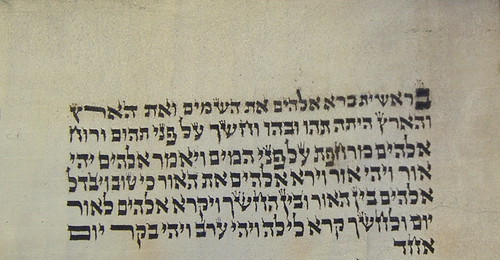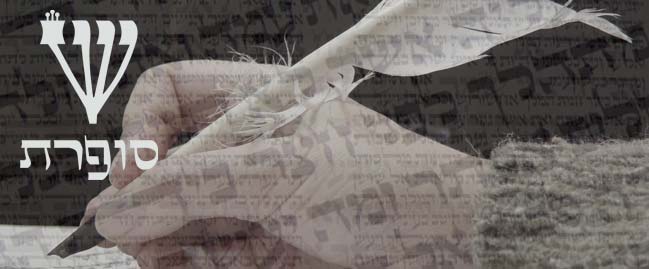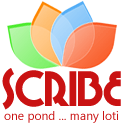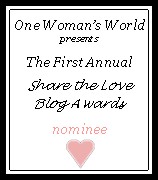אוי גיב מיי אונד העיים וואו דער בופלוקסען געיים
BS"D
Oy gib me und heym voo der buffloxen gaym...
That would be Yiddish for "Oh, give me a home where the buffalo roam..."
Buffloxen!!!
I'd like to talk about home in this post in relation to this week's Parsha, B'REYSHIT! Yes, this Shabbat we being the cycle of reading the Torah all over again. We got a preview on Simchat Torah, which was Sunday, when we read the very end of the scroll & the rolled it back to the beginning again & read some more!
We had a women's reading at Shaarey Tefilah. It was awesome. The men even let us use the newest Sefer, which is totally kosher & has beautiful writing :)
So Sefer B'reyshit parshat B'reyshit/the Book of Genesis 1:1 begins thus:
בְּרֵאשִׁית, בָּרָא אֱלֹהִים, אֵת הַשָּׁמַיִם, וְאֵת הָאָרֶץ.
B'reyshit bara eloqim eyt hashamayim v'eyt ha'aretz:
"At the beginning of G@D's creating of the heavens and the earth:"
This is the Sefer I'm currently cleaning & restoring. It was written after 1800. You can tell this because the first letter, Bet (ב) sports 4 crowns, called taggin or ketarim.
As with many, but not all, s'farim/holy books, the first letter is often enlarged. However, here also is an example of an action taken from the next world, by G@D. The act of creation warrants a large Bet. According to Rabbi Chayim Dovid Halevy, z"l, a great Kabbalist & the former Chief Sefardi Rabbi of Tel Aviv, any time we see an enlarged letter anywhere in our canon (TaNaKH), we are to understand that G@d has disturbed the staus quo with great chesed, kindness, & ahavah, love.
Because the letter Bet carries the gematrial value of 2, it reveals to us the Divine creative mother-father energy within it, beginning the whole universe.
So, why was the world created with the letter Bet? Just as Bet is closed on three sides and open only in front, so you are not permitted to investigate what is above (the Heavens) and what is below (the deep), what is before (the six days of creation) and what is (to happen) after (the world’s existence) - you are permitted only from the time the world was created and thereafter (the world we live in) [Genesis Rabbah 1:10. This may refer either to space or to time, or to both space and time. See Tosafot on Talmud Bavli Hag 11b, s.v. yakhol].
Some say that the Torah begins with the letter Bet to make the statement that the force that G@d used to initiate Creation was Binah - with understanding the world was created. Binah is in the world of Yetzirah, the formative dimention of "just Being". IS-ness. The letter Bet also begins Briyah, the world of knowledge whose world is creative.
Reish Lakish taught that The Holy One made a deal with the rest of Creation, that if Israel accepts the Torah, you will continue to exist; if not, I will return you to nothingness (Shabbos 88a). How do we know this? Because the first word in the Torah is an acronym: "Barishonah Ra'ah Elohim Shey'qab'lu Yisra'el Torah" - "From the start, G@D saw that Israel would accept the Torah" (Baal HaTurim).
In Judaism, G@d has many names, allowing us to attempt to express all the holy qualities of the Creator. One of those names begins with a letter Bet. Bat Qol, which literally means "Daughter of a Voice", but can also mean "Voice from Heaven", "echo", "Divine inspiration" or even "prophesy".
Just as with a ketubah, the traditional Jewish wedding contract, we begin this with a letter Bet which is often enlarged (but not always - that depends on the calligrapher). But we may have a similar situation here that requires a large Bet in a ketubah for the same reasons as in a Torah. Many Jewish couples today enter their first marriage without their virginity. There have been intimate relationships & home-building exercises, most often with people who now dwell in the past. Assuming these experiences have been dealt with, grown from & their lessons integrated into wisdom, there is no need to revisit them after the marriage begins. All that came before, like lovers, homes, experiences, relationships...were only to bring each member of the wedding couple to this point & need only be included in the wedded relationship in their appropriate place. It's not that they get wiped away, or made to magically disappear. But from that large Bet which begins the building of this new, committed home, like the large Bet, the Bayit or "home" for all of Creation, we walk forward together & leave the rest behind.
...where seldom is heard a discouraging word...
:D
Focused kavanah, intention, & great care must be taken with the shape and the length of the Bet when you are writing it. If it appears more round than square, then it could be mistaken for a Khaf (כ). If it is narrower than it is tall it may look like a Nun (נ).
Happy writing!
Technorati tags: religion, religion and philosophy, Judaism, Jew, Jews, Jewish, Torah, Canada, Canadian, journal, weblog, blog, diary, soferet, sofrut, safrut, scribe, art, thoughts, stam, feminism, ritual, women, woman, life, sofer, Technorati.
Labels: Bible Code, Kabbalah, soferet, Torah














4 Comments:
Tayere Soferet (Soferes!)--
Oy indeed!
I love learning from you about scribal arts & much more...but about your I'm-sure-playfully-intended "Yiddish" at the top of the post, my response is more or less the same as yours to:
A) Sello tape on parchment: "Please don't ever do this."
B) Tefillin Barbie (which I love, but more on that later): "I find it offensive...I'm sure that [the creator's] intention here was NOT to trivialize" but "perhaps it could have been better thought out."
I've seen too much mishmashed Yiddish appear even in print from people who should know better--who would have checked how to write or spell something if it had been a quote in some other unfamiliar foreign language (Latin, German, Italian, Swedish), but since it's "just Yiddish," it doesn't matter, there aren't really right and wrong ways to write or spell things, you can just kinda make it up as you go along...all of which is, of course, patently false. It's really not so hard to make your Hebrew-character spelling and your Latin-character transliteration conform to one of the standard orthographies (I go YIVO, as do most non-haredi Yiddish speakers & Yiddishists, but I have a soft spot for Oxford conventions on silent alef & so approve of your spelling of וואו). Really!
Most of us would probably find it offensive and/or clueless if someone wrote:
"Ay! Geev mi una homa dondey los bofolos roma!
That would be Spanish for 'Oh, give me a home where the buffalo roam...'"
(& I have native Spanish speakers much closer in my family tree--father's mother & her family--than I do native Yiddish speakers, for which you'd have to go beyond my mother's parents' generation...)
So: at the risk of coming off as a Humorless Yiddishist, let me just say that your "Yiddish"--aside from "Oy," "gib," and "vu"--isn't even close. There's a phrase in Yiddish for something as badly mangled as this: נח מיט זיבן גרײַזן (Noyekh mit zibn grayzn), which translates roughly as "[writing] 'Noach' with seven mistakes" (it's only 2 Hebrew letters, so how can there be so many errors?):
1)Yiddish for "[to] me" in this context is mir; what you've written in the yidishe oysyes (Jewish/Hebrew/Yiddish letters)--מיי--would be pronounced/transliterated mey and not me or mi, and is meaningless in this context anyway
2) "Und"/ אונד means and, not a (which in Yiddish is..."a"! so "a home" is a heym)
3)You've got an extra ayin in העיים for heym (what you've written would be he-eym)
4)I wouldn't transliterate vu as voo (do you like it when people transliterate Eevreet that way: ah-NEE ye-hoo-DEE? I hate it!)
4)דער/der as definite article ("the") is either masculine nominative singular or feminine dative singular. Not plural. Plural is always di.
5)The plural present tense verb form of "to go" is geyn, not geym or gaym or ge-eym/געיים (that extra ayin again!)
I will not critique bufloksen (which does amuse me, even if it's unlikely to be the actual Yiddish term), other than to say that בופלוקסען would be "bufluksen" (if you want "o", you have to use komets alef--don't you remember the song Afn Pripetshik: "komets alef, o"?)
I have the feeling that I have heard a Yiddish version of "Home on the Range" at some point. If I encounter it again, I'll let you know how their bufloksen are doing...
A dank!
--Rivke-Leye
BS"D
Hey there, Becca!
Thanks for commenting :)
Wow - I learned so much about Yiddish from you tonight! It's been hunderds of years since anyone in my family spoke Yiddish, so I'm far from a scholar; I don't have much knowledge outside my Yiddish language course or my "Yiddish with Dick & Jane" book (I highly recommend this read!).
The title for this post came from exactly the song you referred to. It's by a fab Vancouver group named Tzimmes & has been covered by such Jewish music luminaries as Rabbi Jack Gabriel.
Anyway, Tzimmes includes native Yiddish speakers. The translation was done by a woman who, I understand by those more fluent than I in the mame loshen, writes wonderfully poetic lyrics.
BS"D
Marie Jaffee! That's the name of the woman who translated "Oh Give me a Home" into Yiddish. But I must take responsibility for the less-than-scholarly spelling :)
Wayyyyyyy! Marie Jaffee!!!
If bufloksen are good enough for her, they're plenty good enough for me! ;)
We have her awesome book Gut Yontif, Gut Yohr (first published in 1965), which does in fact feature her translation of "Home On the Range" under the title Cowboy Lid ("Cowboy Song"). Mike has typed in the words for the first verse & chorus below (and we're doing well & miss you too, thanks!!!)...but we've taken the liberty of using YIVO transliteration instead of her more idiosyncratic one:
Oy gib mir a heym vu di bufloksn geyn,
Vu di hirshelakh shpiln oyf's land;
Keynmol hert men dort a fartumltn vort,
Un der himl iz bloy nokhanand.
Heym, dort iz mayn heym,
Vu di hirshelakh shpiln oyf's land;
Keynmol hert men dort a fartumltn vort,
Un der himl iz bloy nokhanand.
And it can be realllllly hard to understand/transcribe foreign-language songs, especially if one doesn't know the language--so now I feel for your attempt to put down in writing what you heard Tzimmes singing. And I'll have to get hold of some of their stuff, now that I know about it!
Post a Comment
<< Home